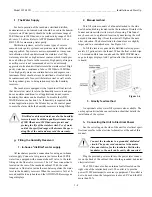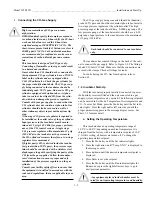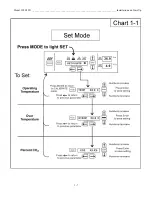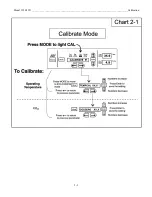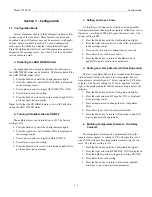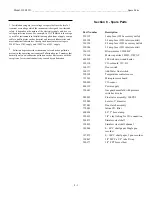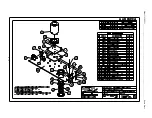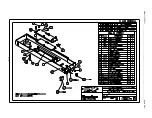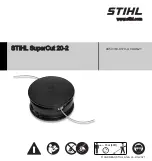
Section 5: Maintenance
If the unit has been in service, turn it
off and disconnect the power cord
connector before proceeding with any
maintenance.
Before using any cleaning or decontamination
method except those recommended by the manu-
facturer, users should check with the manufactur-
er that the proposed method would not damage
the equipment.
5.1 Cleaning
The chamber interior may be cleaned with a general-use
laboratory disinfectant or alcohol.
The cabinet exterior may be cleaned with soap and water
or any non-abrasive commercial glass cleaner. The Thermopane
glass door may be cleaned with commercial glass cleaner or
with a solution of ammonia and water.
Alcohol, even a 70% solution, is volatile and
flammable. Use it only in a well ventilated area
that is free from open flame. If any component is
cleaned with alcohol, do not expose the compo-
nent to open flame or other possible hazard.
Do not use strong alkaline or caustic agents.
Stainless steel is corrosion resistant, not corrosion
proof. Do not use solutions of sodium hypochlorite
(bleach) as they may cause pitting and rust.
5.2 Cleaning the Glass Doors
The chamber glass door and the optional independent inner
doors may be cleaned using the same disinfectant as used on
the incubator interior. It is imperative that they be rinsed with
sterile distilled water to remove the disinfectant residue. The
doors should then be dried with a sterile soft cloth.
Some precautions in the cleaning and care of the incubator
glass doors:
Moisture leaches alkaline materials (sodium, Na) from the
surface of the glass. Evaporation of the moisture concentrates
the alkaline and may produce a white staining or clouding of
the glass surface. Cleaning chemicals with a PH above 9 accel-
erate the corrosion process. Therefore, it is very important to
rinse and dry the glass doors after cleaning.
There is no simple method for repairing corroded glass. In
most cases, the glass must be replaced.
5.3 Cleaning the Humidity Reservoir
Periodic cleaning of the humidity reservoir beneath the
incubator floor is recommended in order to remove bacteria,
fungi or any accumulated mineral deposits.
1. Turn off and/or disconnect the water supply to the
humidity reservoir.
2. Attach a drain fitting and hose to the drain port on the
back of the unit. Run the hose to an appropriate drain.
3. With an adjustable wrench, remove the brass overflow
fitting located at the rear of the humidity reservoir.
Allow reservoir to drain. Reservoir holds approximately
4 gallons (15.4 L).
4. Disassemble the hose bracket from the incubator floor.
5. Remove the 8 screws securing the floor. Using the circu-
lar black plastic grommet, slide the floor outward to
expose the humidity reservoir.
6. Remove any remaining water and sediment from the
reservoir with a clean sponge.
7. Clean the reservoir with a general-use laboratory disin-
fectant. Rinse well with sterile distilled water and wipe
dry with a clean cloth.
Note:
On reassembly, the brass overflow fitting must be
checked for leaks.
Distilled water used in the incubator humidifier
reservoir must be within the 50K Ohm to 1M Ohm
range to protect and prolong the life of the stain-
less steel unit.
Use of tap water or distilled water outside the
specified range will decrease the operating life of
the unit and may void the warranty.
Do not use strong alkaline or caustic agents.
Stainless steel is corrosion resistant, not corrosion
proof. Do not use solutions of sodium hypochlorite
(bleach) as they may cause pitting and rust.
Model 3950/3951 _____________________________________________________________________________Maintenance
5 - 1

